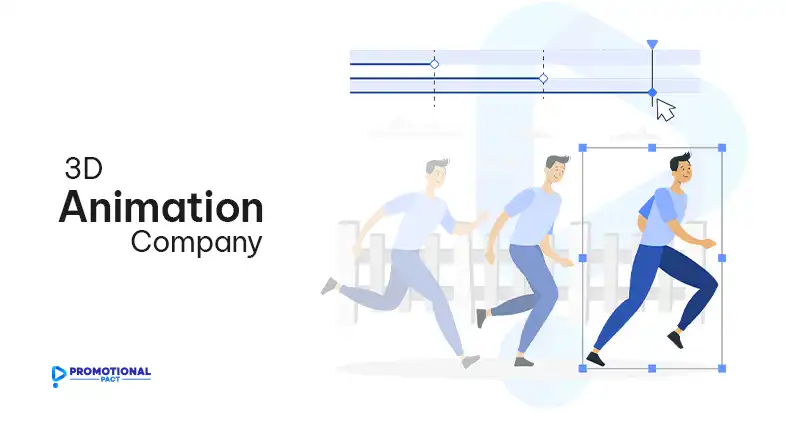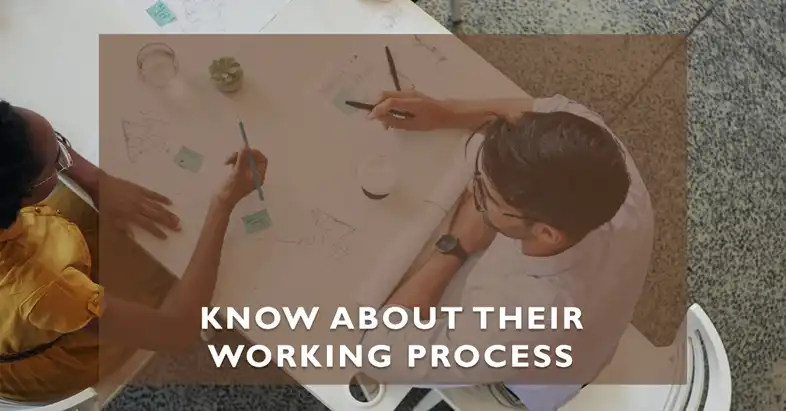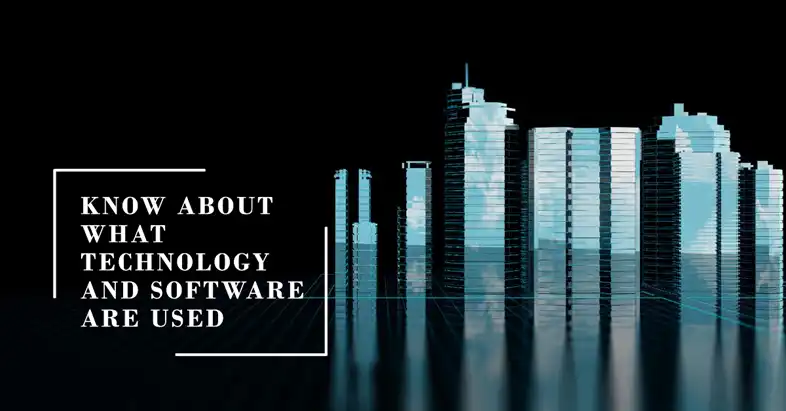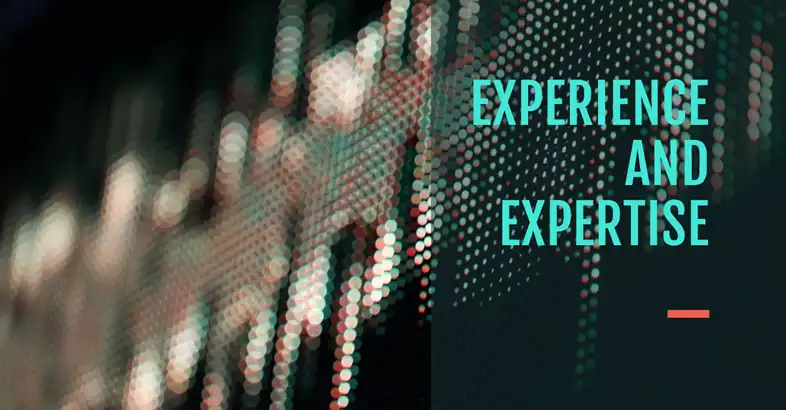As a 3D animator, I get asked all the time – “How do I choose the right studio for my project?” It’s so important to find a good match based on your specific needs. When looking, start by reviewing portfolios and samples relevant to your goals. Make sure to have in-depth discussions to align on vision, style, and technical requirements. Ask about the full production process so you know what to expect. Check reviews and testimonials from past clients as well. I hope these tips help you make a confident choice and allow us to bring your creative vision to life! Let’s chat more about how my team can help with your animation needs.

Portfolio and Work Samples

When choosing a 3D animation company, the first thing you’ll want to look at is their portfolio. A strong portfolio with diverse, high-quality examples of previous work is a good indicator that the company can produce the type of animation you need.
Look for samples that are similar in style, complexity, and scope to your project. For example, if you need a 2-minute 3D animated video, examine their previous animated shorts rather than still product renders. If you need a realistic human character, review examples of character modeling, rigging, and animation specifically. Poor quality like jagged modeling of a human face or unrealistic body movements are red flags that indicate subpar skills.
Ask to see additional samples beyond their website if needed. For example, for a medical project, request to see examples of previous medical animations demonstrating their ability to visualize anatomical structures accurately. If confidentiality agreements limit their sharing of some work, they should still be able to describe their experience in detail.
Ultimately you want to choose a 3D animation company with a diverse portfolio demonstrating their ability to deliver work that meets your needs and expectations.
Specialization

Consider what type of 3D animation project you need completed and look for companies that specialize in that area. Many firms specialize in specific industries or animation techniques:
🧑💻Character Animation: Rigging, modeling, motion capture, and character performances. Useful for video games, animated films, and TV productions.
🏗️Architectural Rendering: Detailed 3D modeling and lifelike visualization of building interiors and exteriors. Applications in architecture, construction, real estate, etc.
🛠️Mechanical/Technical Animation: Animated part assembly instructions, equipment demos, and interactive 3D diagrams. Used by engineers, manufacturers, etc.
⚕️Medical/Scientific Animation: Educational medical illustrations, molecular/cell animations, anatomical modeling, etc.
🎬Advertising/Marketing Animation: Branding, explainers, commercials, animated logos, and other advertising applications.
A company focused on your industry and application can provide the right technical expertise. They understand common needs and challenges that inform their workflow. Specialized experience also enables realistic, accurate visuals using common conventions.
Some larger studios offer diverse services. But quality may suffer without a specialty focus. For best results, align your project with their demonstrated areas of emphasis and talent.
Working Process

The company’s work process gives insight into their communication skills, project management, and ability to deliver on time and on budget. Ask specific questions about each step:
🔱Initial Consultation: Do they start each project by learning about your needs, objectives, and target audiences? What is delivered after this (e.g. proposal, production plan, etc.)?
🔱Pre-Production: How is the concept refined? Do they provide scripts, concept art, and storyboards? How many revisions/feedback cycles are at this stage?
🔱Asset Production: What is their modeling, rigging, and scene setup process? What systems ensure assets meet technical specifications?
🔱Animation: How is animation work divided? What reviews/checkpoints are there during this phase? Can you provide feedback before full completion?
🔱Rendering: Do they discuss rendering options with you? What quality control checks are in place? How long does rendering take?
🔱Post-Production: What editing, visual effects, sound design, and final polishing occur? How is your feedback incorporated?
Delivery: How is the final project delivered? What supporting files, and documentation are included? Is there a round of review before the final sign-off?
Detailed processes with built-in reviews, approval points, and open communication enable smooth collaboration. Inflexible, opaque approaches can result in mismatched expectations.
Technology and Software

The 3D software, hardware, and pipelines a company relies on impact productivity and end results. Ask about their technical capabilities:
Software
Industry-standard programs like Autodesk Maya, Blender, Cinema 4D, Houdini, and ZBrush are very capable but have strengths and weaknesses. Understand their workflows.
Rendering Tools
Renderers like Arnold, Octane, and Redshift provide flexibility in lighting, textures, and camera effects. V-Ray is also popular.
Motion Capture
Some studios use motion capture for natural movements. Review examples to see if quality meets your needs.
Hardware
Render farms, high-end workstations, and equipment allow for fast processing, complex scenes, and physics/particle effects.
Game Engines
Tools like Unity and Unreal Engine enable real-time animation and interactivity. Useful for VR, architectural viz, and video games.
Pipeline
Their content creation pipeline should ensure that 3D assets are optimized for animation. Ask about asset management, scalability, and efficiency.
While you don’t need expert knowledge of these technologies, it helps to know if the company utilizes mature solutions suited to your goals. Up-to-date tools signal they invest in quality and have technical mastery.
Experience and Expertise

An experienced 3D animation company that has been in business for several years has likely honed its skills and processes. They learn from years of projects to avoid mistakes and work efficiently. Areas to investigate:
- Industry Experience: The collective experience of their animation team is crucial. Ask about individuals’ backgrounds – many years of industry work is ideal.
- Company Experience: How long have they been in business? Look for 5+ years of focused animation experience. Check client lists and case studies for breadth.
- Past Projects: Volume of work and variety of clients signals capabilities. Ask about complexity, styles, and specialized needs met for previous clients.
- Training: Ongoing training keeps skills current. Look for access to training resources, mentorship programs, and professional development policies.
- Talent Retention: Low turnover indicates an environment for talent to thrive. Mature teams evolve and improve together over the years.
While seeking experience, prioritize the specific expertise needed for your project – character animation, photorealism, motion graphics, etc. Evaluate both company experience and the backgrounds of individual team members.
Communication and Collaboration

Clear communication is key throughout an animation project. Ask prospective firms about their communication process:
- What is the standard process and frequency for project status updates?
- What tools (email, chat, project management software, etc.) do they use to communicate?
- Will you have access to the team for questions, reviews, and feedback?
- How are changes, feedback, and approvals communicated and managed?
- How efficiently do they resolve concerns if they arise?
Ideally, you should have transparency into their progress and direct access to the team when needed. There should also be a structured system for feedback so changes are incorporated smoothly.
Collaboration ability is also crucial. Your input shouldn’t disrupt their process but be integrated into it. They’ll guide you to provide constructive feedback. There should be mutual respect between the client and the animator.
Open communication and seamless collaboration ultimately ensure your vision comes through clearly in the final product.
Reviews and Testimonials

Unbiased third party reviews, testimonials, and client feedback provide valuable insight into working with the company. Look for positive ratings and reviews on sites like Google (4.8 stars) and Facebook (9.4 rating). Video testimonials should highlight specific strengths like quick iteration or creative problem solving. Written testimonials from past clients in your industry are ideal.
For example, a testimonial from another software company praising their detailed product visualizations. Case studies demonstrating how the company created an engaging social media promo for a retail client show their ability to solve marketing problems. Awards from ACM SIGGRAPH or animation festivals signal the quality of their work and strong industry reputation.
While client-provided references are useful, third party sources give a more balanced perspective. Look holistically not just at the quality of animation reels but also at project delivery, communication, and working relationships. Positive feedback in these areas indicates they will be an effective partner for your project.
Pricing

When comparing costs between studios, consider both the rates and overall value delivered. Hourly rates based on team experience level are common – compare these to industry averages. For example, if senior animators are $80/hour at one studio vs $100/hour at another studio. For project-based pricing, evaluate the total cost against the expected scope of work. A 60-second explainer video may range from $10,000 – $30,000 based on quality level. Make sure all potential fees for revisions, licensing, etc are explained upfront. Higher rates often reflect deeper expertise, capabilities, and quality assurance which brings added value.
Avoid choosing only based on the lowest bid. Think about the experience, services, and overall value delivered within the proposed budget. Paying 20% more for the right studio is often worth it in the long run.
Legal and Contractual Aspects

The contract is critical to set clear expectations and IP ownership. It should specify project milestones (concept, production, post-production), deliverables (storyboards, 3D assets, final video files), reviews, approvals, payment terms (50% upfront, 50% on completion), detailed scope of work, timelines (6-week production schedule), ownership rights (you own full copyright on all deliverables), confidentiality, warranties (no copyright infringement or inappropriate content), liability terms (limited to fees paid), ability to terminate, and governing law (California). Carefully review all contract terms or have a legal team scrutinize them before signing. A detailed agreement ensures your $50,000 investment is protected and provides legal recourse if issues arise.
What to Do while Contacting Potential Company?
When contacting potential 3D animation companies, start by thoroughly reviewing their portfolio and samples that are most relevant to your particular project needs – whether that is character animation, motion graphics, VR environments, or other areas.
Understand Their Working Process, Timeline, and Pricing
Get a clear understanding of their full production process including typical pre-production and concept work, actual 3D modeling and animation production, post-production polishing and effects work, built-in review stages and approval points, and final delivery process. Discuss expected timelines and milestones based specifically on the scope and complexity of your project, and probe how they can accommodate urgent deadlines or last-minute creative changes if required. Get very detailed pricing information for your exact scope of work and specifications and ask questions to clarify what is included versus any potential additional charges or add-ons in their project-based quotes.
Asking Questions and Expressing Concerns
Don’t hesitate to proactively discuss any doubts, uncertainties, or concerns you may have about their technical capabilities, expertise levels in areas needed for your project, production process, project management abilities, communication style, availability, or overall compatibility working with your preferred style and needs. Ask any clarifying questions needed to get transparent responses and a complete understanding of their proposals. Voice any of your unique creative challenges, specialized technical needs, or potential roadblocks you foresee so you can get their thoughtful ideas and suggestions on how these can be best addressed if you partner together.
Revision Policies and Client Satisfaction
Clearly understand their standard policies related to the incorporation of revisions, change orders, and obtained approvals during the production process so you know what to expect if your creative vision shifts. Ask what percentage of their clients typically come back to them for additional projects or ongoing services as this repeat and referral business is a strong indicator of overall customer satisfaction. And make sure to request multiple client references that you can contact, specifically those who worked with the studio on projects very similar in scope, style, and needs to yours.
Company Location and Communication Preferences
If considering options that include overseas studios, carefully consider any time zone gaps and how that could potentially impact communication cadence and responsiveness. Have an open discussion to align on preferences for the frequency of project status updates, access to key members of the animation team when needed, preferred communication channels, and availability expectations for timely reviews and approvals throughout the duration of the project.
Additional Services Offered
Ask if they provide other related services like initial concept art, script writing, voiceovers, and music in-house as part of their end-to-end production capabilities, or if they fill those project needs through external partner firms. While having integrated services under one roof can ensure smoother cohesion across all creative elements, the quality of work from any external partners they rely on may vary.
Closing Thoughts
Well, those are the main things I suggest people consider while picking one! Having clear expectations and asking the right questions upfront made a huge difference in finding someone who “got” my vision. Of course, every project is unique, so keep your specific goals and needs in mind. I hope this gives you a helpful starting point and framework though. Let me know if you have any other tips based on your own experiences! And if you are willing to have all of the aforementioned things in a 3D animator company, then you can check out our 3D product animation service! Hope to see you soon mate, over and out!

